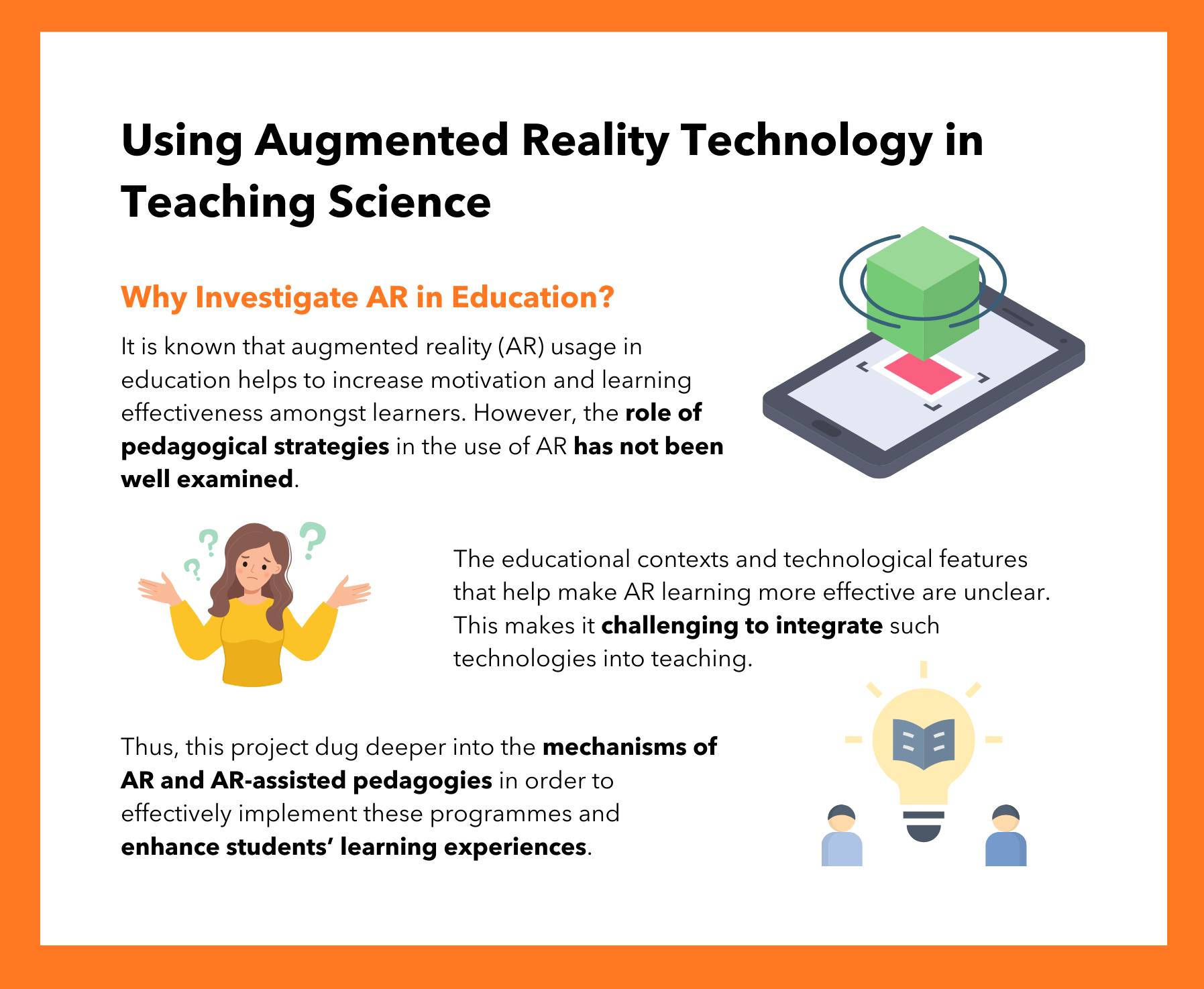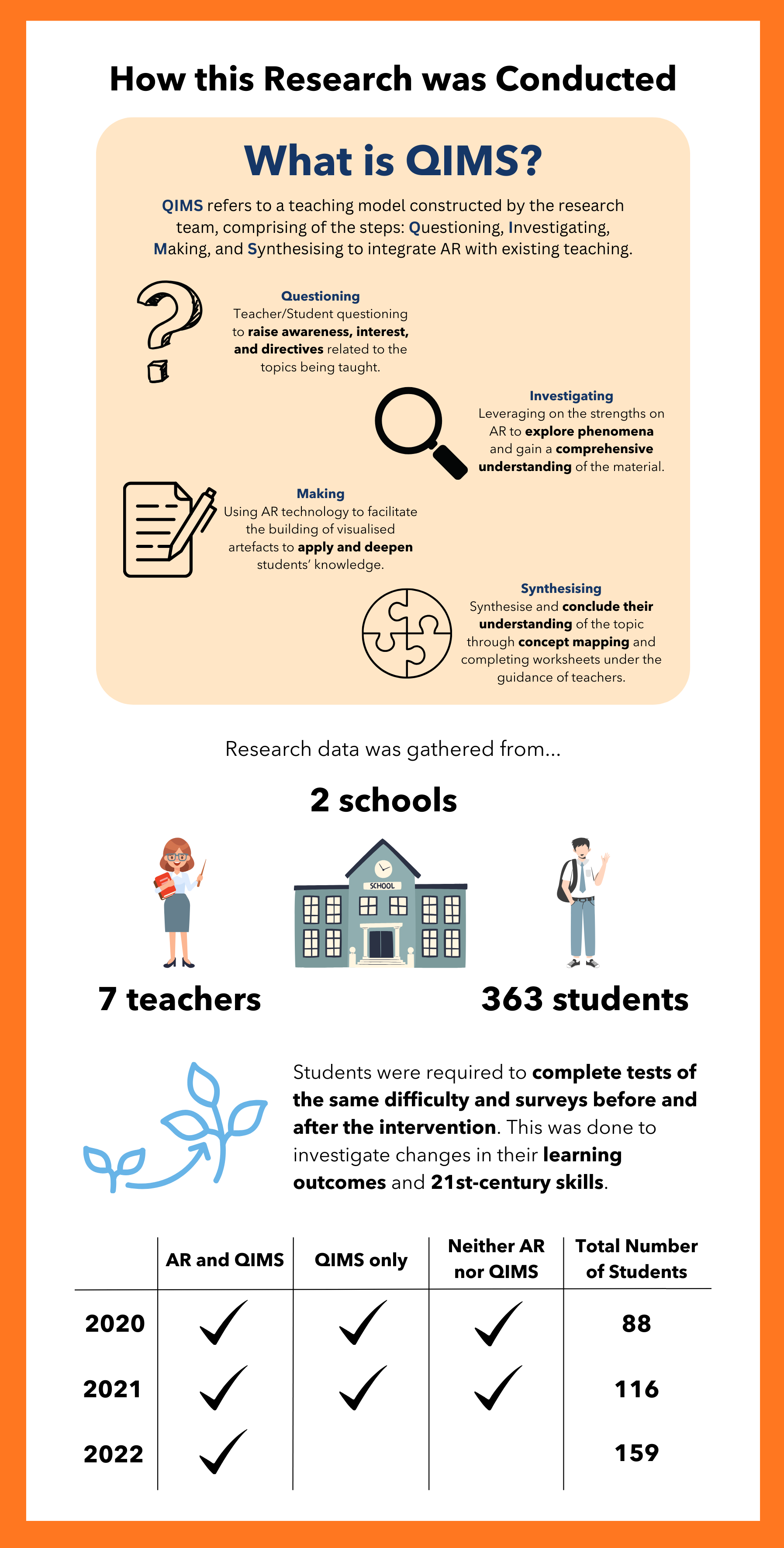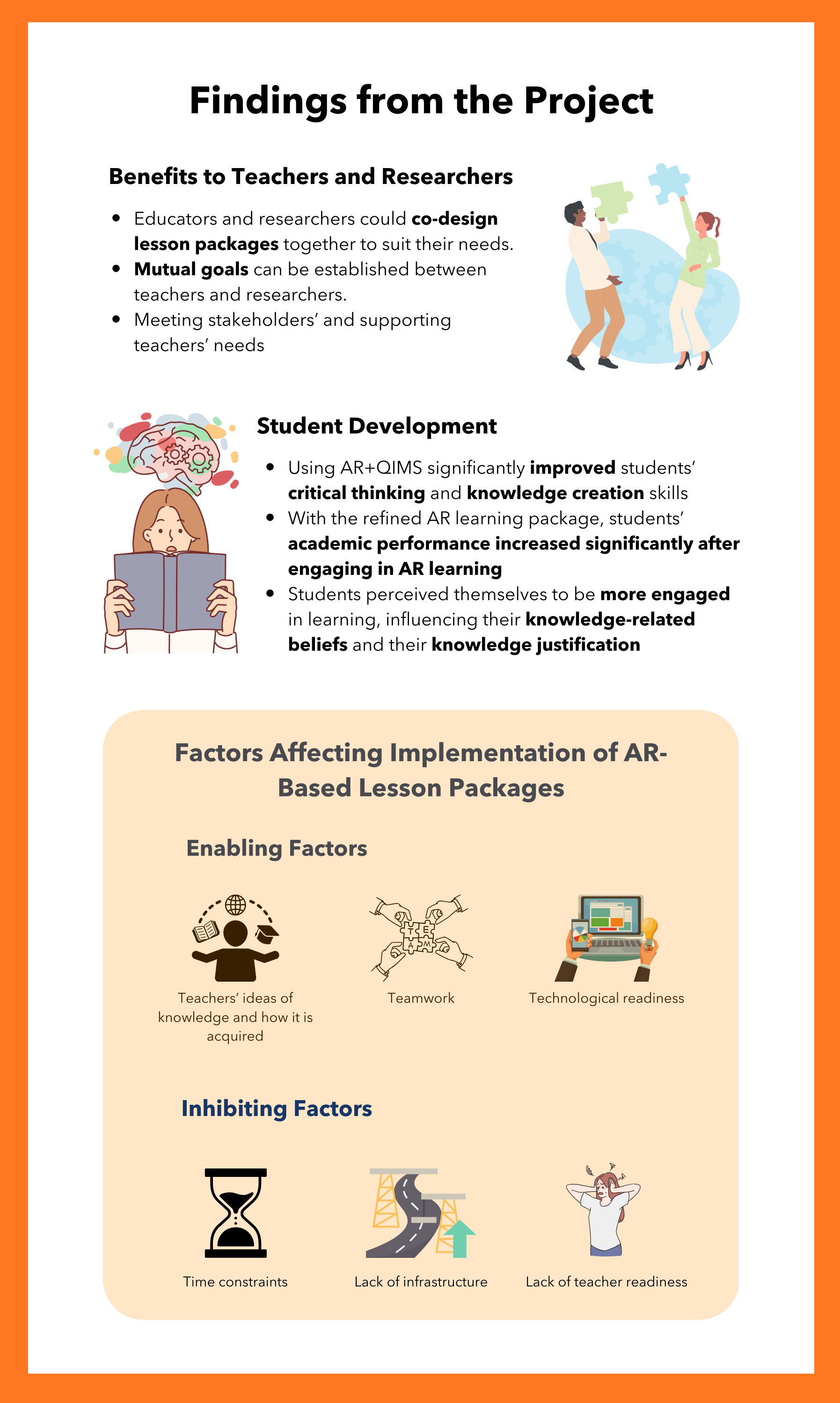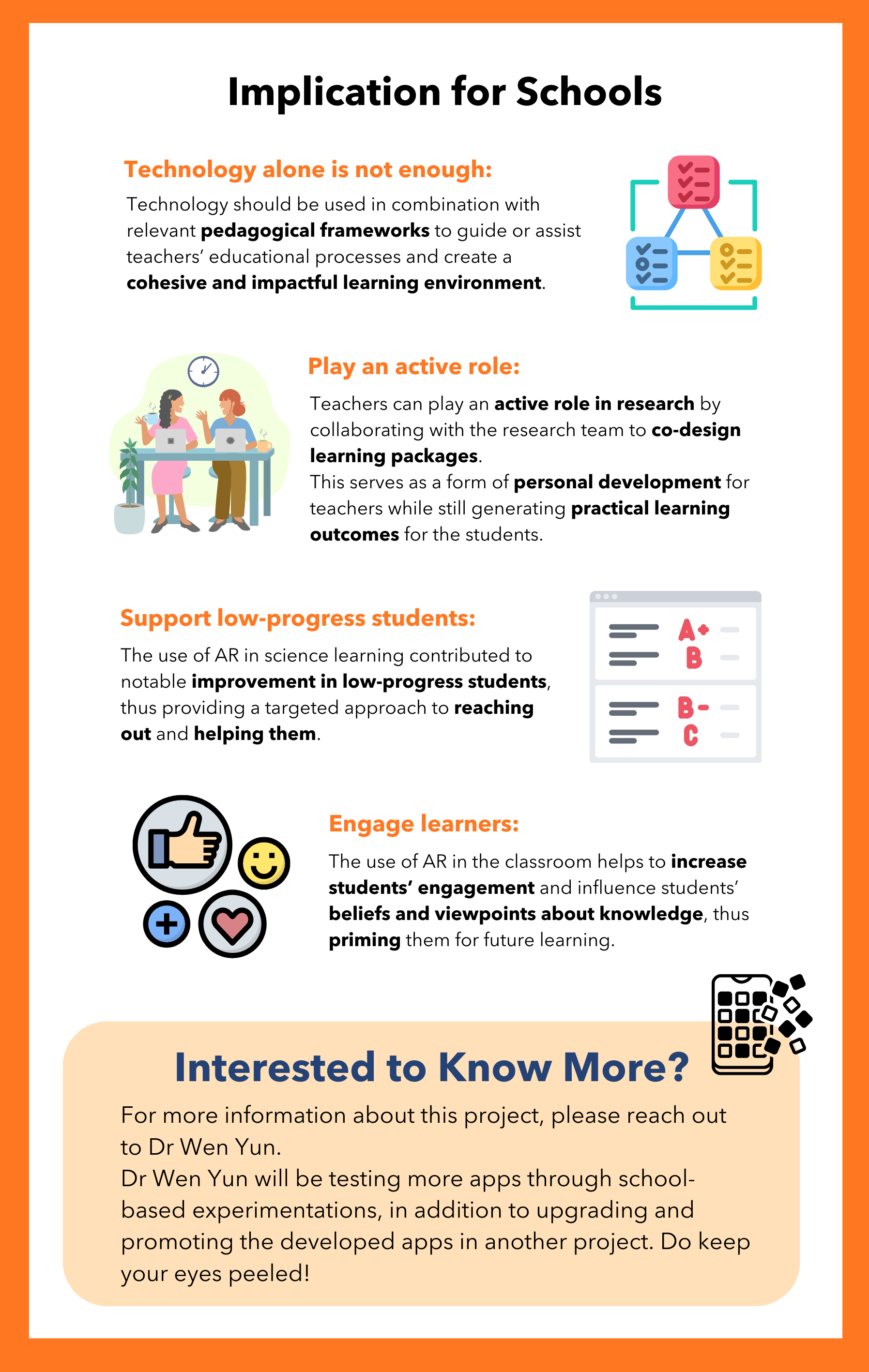Why Singapore’s English Teachers Should Embrace Singlish, Not Fight It
Is it time for Singaporean educators to embrace Singlish as a legitimate learning tool? What the Research […]
Read More
Key Insights




For educators interested in the research methodology behind AR in Science Learning, you may refer to:
To learn more about this research, please contact Dr Wen Yun at yun.wen@nie.edu.sg.
Principal Investigator
Research Assistant
AR in Science Learning was funded by the Education Research Funding Programme, National Institute of Education, Nanyang Technological University, Singapore (project no. OER 26/19 WLK). Any opinions, findings, and conclusions or recommendations expressed in this material are those of the author(s) and do not necessarily reflect the views of the Singapore MOE and NIE.
This knowledge resource was extracted and reconstructed from the published materials from the research team by Ms Shee Yi Xuan, Katherine with input from Dr Wen Yun and presented on 30 April 2024.